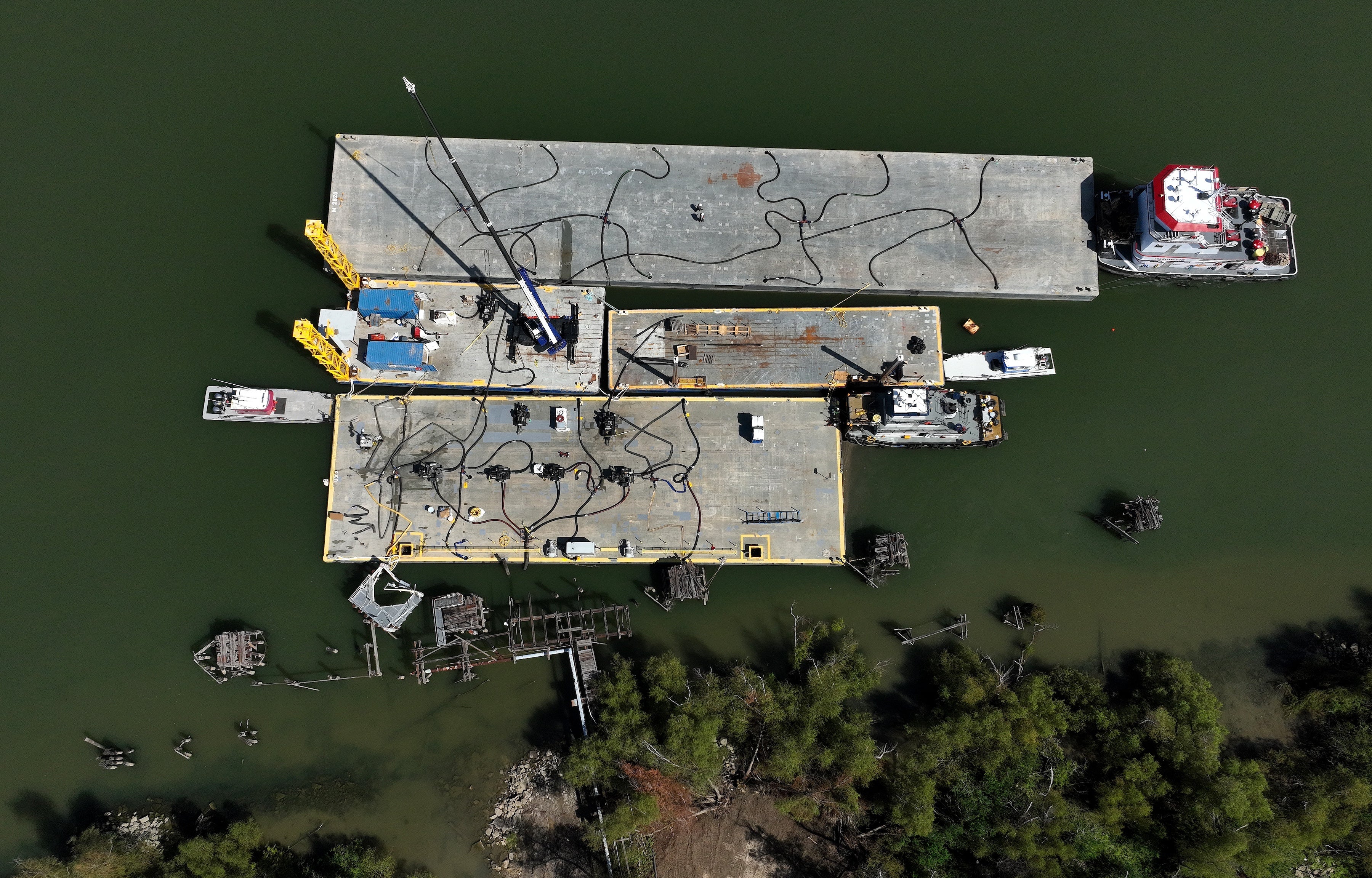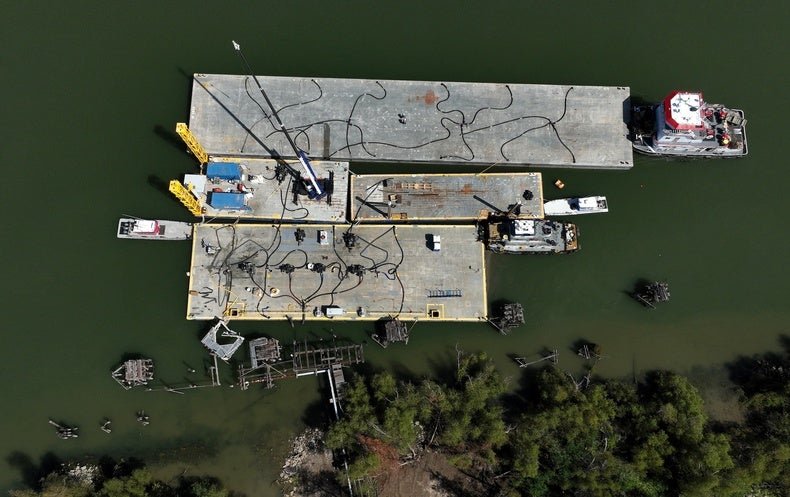
CLIMATEWIRE | The drought-driven wedge of salt water creeping up the Mississippi River is deepening a mystery about one of the world’s mightiest waterways.
How will climate change affect the river?
There are relatively few scientific studies on how warming is reshaping the Mississippi, and even fewer on saltwater intrusion from the Gulf of Mexico. The void comes as climate change threatens to alter the second-longest river in North America through raging floods, rising seas and prolonged drought, having extraordinary effects on the people who live in more than 100 cities and towns nestled along its banks.
Scientists admit that gaps in their understanding about the effects of rising temperatures on the river have left them searching for answers about the saltwater wedge that is slowly moving upriver toward New Orleans, where it could jeopardize freshwater supplies by next month.
But they say there are a number of ways climate change could be affecting the wedge.
Droughts are expected to grow more frequent and intense across much of the U.S., meaning dry spells like the one affecting the river now could happen more often. That has helped the wedge move upriver from the Gulf because the depleted river flow isn’t strong enough to stop it.
But heavy rainfall events are also intensifying, potentially increasing the risk of floods — and preventing salt water from creeping into the channel. It’s still unclear which factor is likely to have the greater influence.
Sea levels are also rapidly rising along the Gulf Coast. That could increase the risk of saltwater intrusion on the river, scientists say — but they aren’t sure by how much.
And there are plenty of other human factors to consider. The Mississippi is one of the most heavily engineered rivers in the country, with dams, levees, reservoirs and frequent dredging. These practices can affect the river’s flow, making it difficult to parse out the influence of climate change compared with other forces. This is the second year in a row that salt water has entered the river, and the fourth time since 1999.
“It’s still very much an open question what’s going to happen in the future of the Mississippi and the degree to which the trends we’ve been seeing over the last few years is the result of climate change,” said Samuel Muñoz, a hydrology expert at Northeastern University.
The wedges over the last two years will likely spur more research, said Tor Törnqvist, a geologist at Tulane University in New Orleans.
“I wouldn’t be surprised if more people are gonna jump on this,” he said.
Extended drought across the Mississippi River Basin is largely responsible for this year’s event, weakening the river’s flow and causing water levels to approach record lows in some areas. The Mississippi’s powerful flow prevents much salt water from seeping upstream in ordinary years, even as the Gulf of Mexico presses up against its mouth.
A similar situation occurred in 2022, when water levels in some stretches of the river — including Memphis, a key shipping hub — dropped to some of their lowest levels ever observed.
The U.S. Army Corps of Engineers has already constructed an underwater sill at the bottom of the river, designed to slow the salt water’s progress, and is in the process of raising it even higher. Still, residents in some areas, including parts of Louisiana’s Plaquemines Parish, have been using bottled water for weeks.
And while the salt water’s incursion has slowed over the last two weeks, experts say it could still hit New Orleans by the end of November, leaving officials two months to decide how to protect the city’s drinking water.
Worsening droughts could increase the risk of saltwater wedges. But intensifying downpours could have the opposite effect. There’s the potential for a kind of climate tug of war between intense wet and dry periods on the Mississippi River, and scientists don’t have a clear answer about which effect will win out.
That’s because climate models tend to disagree in their projections for the Mississippi River’s climate future, Muñoz said.
“There’s really no consensus,” he said. “Some of the models say that river flow discharge will go up. Other models say it will go down.”
Muñoz and other researchers published a scientific paper earlier this year presenting the results of a single model suggesting that flow will generally increase in a warming climate, increasing the odds of floods.
But it’s “just one model,” he cautioned. “There are others, and they would probably tell a different story if we really dug into them.”
Another study, published last year by researchers from the Army Corps, explored simulations from a suite of 16 models. Most projections suggested stronger flow as the climate warms, although the study notes that some models predicted the opposite.
Scientists are working to solve the mystery. Muñoz is involved in a project, funded by the National Science Foundation, to investigate how climate change will affect large-scale weather patterns like heavy precipitation and drought on the Mississippi River Basin, along with several researchers from Rice University.
Still, he said, there are other factors that could affect saltwater intrusion in the future.
Dredging, the construction of dams and reservoirs, and other human activities on the river are one factor. Americans have dramatically engineered the Mississippi River to control floods and increase navigability. And the Army Corps regularly dredges the river so barges can travel the waterway.
But “deepening the channel obviously makes things much more vulnerable,” said Törnqvist of Tulane, who noted that it can increase saltwater intrusion.
Sea levels are also rapidly rising along the Gulf Coast, as much as three times faster than the global average.
At the same time, the land itself is slowly sinking into the sea. Known as subsidence, the process has a variety of causes, some natural and some driven by human activities, like groundwater withdrawal.
The combination of rising seas and subsidence likely raises the potential risk of saltwater intrusion, Törnqvist said. But it’s unclear by how much — another question that few studies have addressed.
“I’m not sure if anyone has ever studied this in any detail,” he said. “That will remain probably a matter of some speculation for now. But I think it’s safe to say it’s something we need to understand for sure.
“I would also expect, because of this situation we’re facing right now, that it’s gonna happen pretty soon,” he added.
Reprinted from E&E News with permission from POLITICO, LLC. Copyright 2023. E&E News provides essential news for energy and environment professionals.



